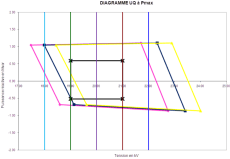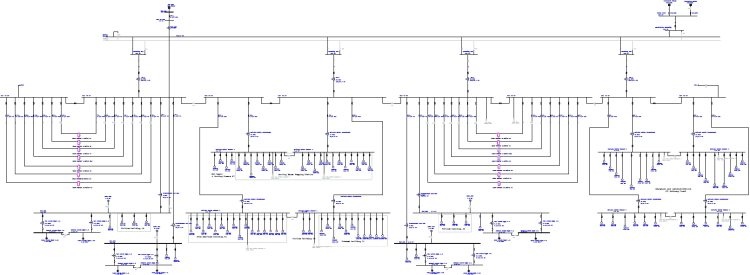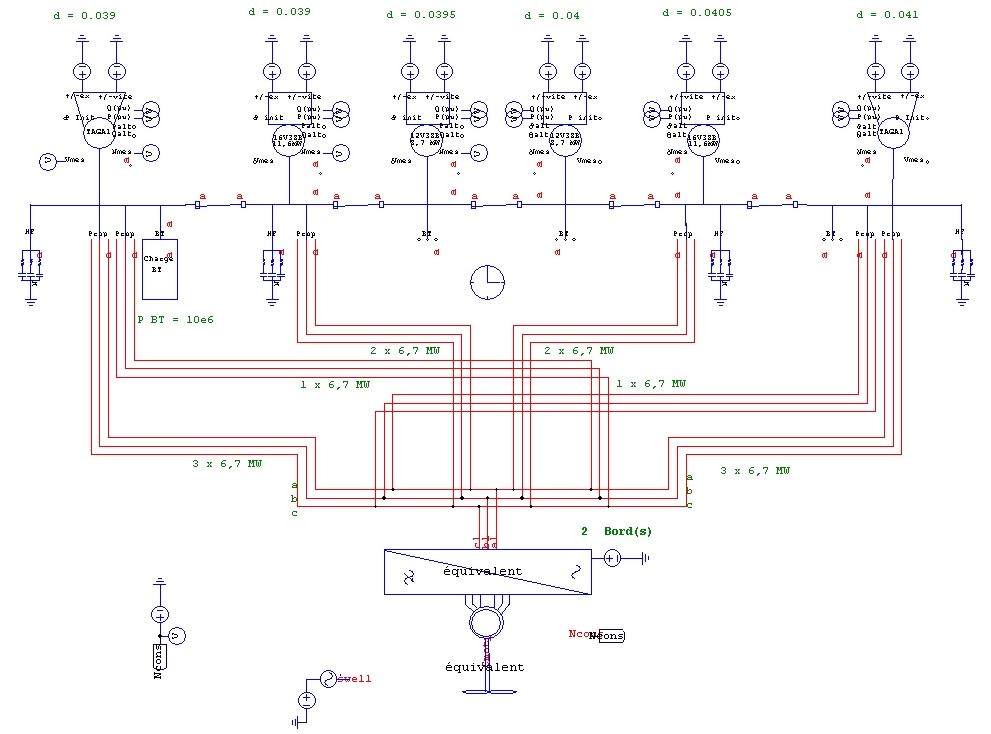Power grid studies
Dynamic stability study
Background
An electricity grid may sometimes be subject to abrupt changes in its operating conditions, either in normal operation or due to an incident.
- Coupling or loss of a generator
- Variation in load on the grid
- Start-up of a motor, reacceleration of a collection of motors
- Islanding on a power plant, load shedding
- Short-circuits, voltage dips, etc.
Requirement
The passage from the initial conditions to the final conditions, called the transient phase, may involve disturbances on the grid or even degradation of its operation:
- Exceeding the limits imposed by the grid standards (frequency and/or voltage range)
- Risk of dynamic and static instability (loss of synchronization between the generators)
- Poorly quenched oscillations of the regulation system, etc.
- Resonance and/or ferroresonance
For many risks, this involves anticipation and control through the choice of equipment and suitable sizing, through optimum regulation of the regulating mechanisms and through instrumentation and control strategies, allowing the system to remain in a stable regime (Power Management System).
Principle :
It is in this context that Capsim carries out dynamic studies and transient stability studies of the grid. These studies begin by considering the transient behaviour characteristics of the equipment (machines, regulation systems, etc.) and then modelling the grid using dynamic simulation software.
Results
These studies allow analysis of the identified transient phases, qualification and quantification of the disturbances which may appear, evaluation of the stability margins and proposal of remedial solutions in the event of a problem. They can also be used to evaluate instrumentation and control strategies (load shedding, power equilibration between generators, reconfiguration, etc.).

Changes in the value of the electrical parameters of two generators following appearance of a fault





